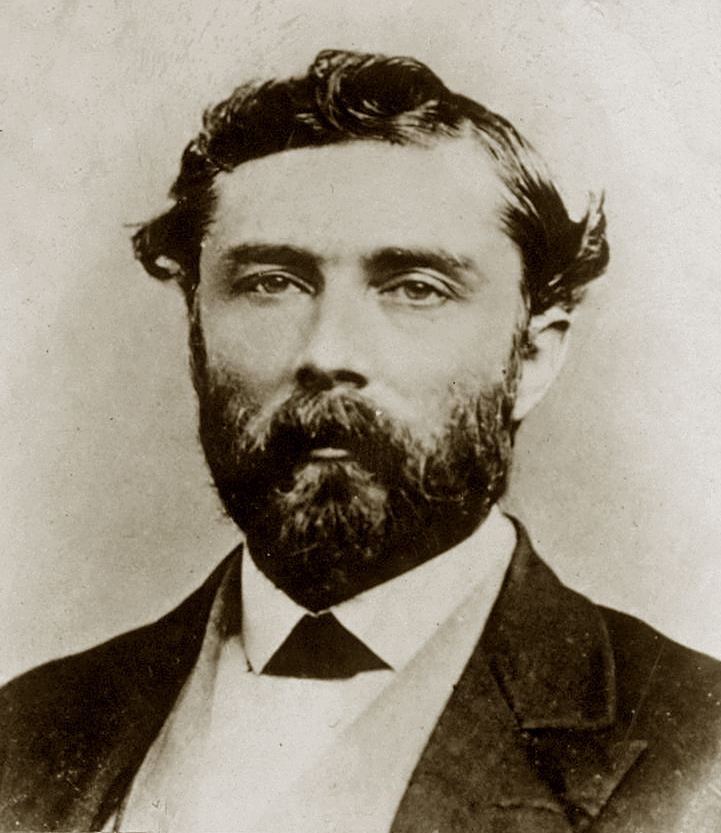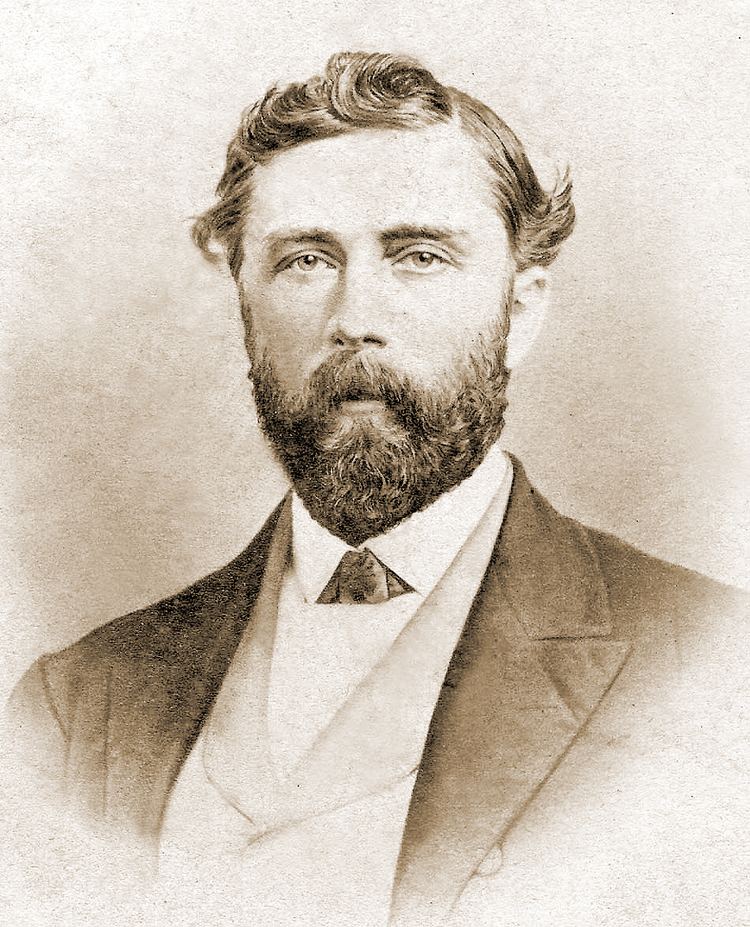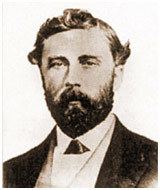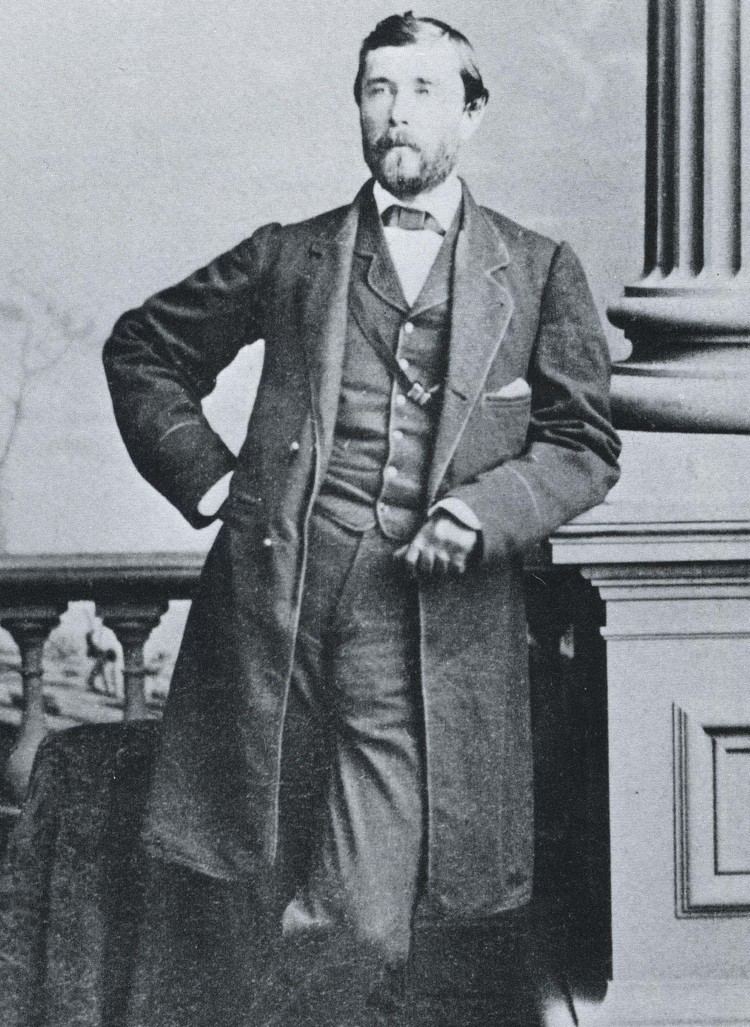Cause of death Yellow Fever Title Chief Engineer, CPRR Role Engineer | Other names "Crazy Judah" Known for railroad pioneer Name Theodore Judah Books Judah the Dreamer | |
 | ||
Similar People Charles Crocker, Mark Hopkins - Jr, Collis Potter Huntington, Leland Stanford | ||
Theodore Dehone Judah (March 4, 1826 – November 2, 1863) was an American railroad and civil engineer who was a central figure in the original promotion, establishment, and design of the first Transcontinental Railroad. He found investors for what became the Central Pacific Railroad (CPRR). As chief engineer, he performed much of the land survey work to determine the best route for the railroad over the Sierra Nevada mountains.
Contents

Early life and education

Theodore Judah was born in 1826 in Bridgeport, Connecticut, the son of an Episcopal clergyman. After his family moved to Troy, New York, Judah studied engineering at Rensselaer Polytechnic Institute.

At age 21 Judah married Anna Pierce on May 10, 1847. Theirs was the first wedding in the then new St James Episcopal Church of Greenfield, Massachusetts.
Career
After working on a number of railroads in the Northeast, Judah was hired as the Chief Engineer for the Sacramento Valley Railroad in California. It was the first railroad built west of the Mississippi River. Throughout the 1850s, Judah was known as "Crazy Judah" for his idea to build a railroad through and over the Sierra Nevada, a project which many people at the time considered impossible.
CPRR
As the chief engineer of the Central Pacific Railroad (CPRR), Judah surveyed the route over the Sierra Nevada along which the railroad was to be built during the 1860s. Failing to raise funds for the project in San Francisco, he succeeded in signing up four Sacramento merchants, known as the "Big Four": Leland Stanford, Collis P. Huntington, Mark Hopkins, and Charles Crocker. They managed financing and construction of the CPRR.
With their backing, Judah lobbied for federal authorization and government financing of the transcontinental railroad in Washington, D.C.. He contributed to the passage of the 1862 Pacific Railroad Act, which authorized construction of the First Transcontinental Railroad. After passage of the 1862 Act, the Big Four marginalized Judah. They put Crocker in charge of construction. Construction was completed in 1869, with virtually the entire course of the railroad having followed Judah's plans.
Death
Judah died of yellow fever on November 2, 1863. He contracted the disease in Panama on a voyage with his wife to New York City, apparently becoming infected during their land passage across the Isthmus of Panama. He was traveling to New York to seek alternative financing to buy out the Big Four investors. Abigail took his body back to Greenfield, Massachusetts, where he was buried in the Pierce family plot in the Federal Street Cemetery.
Legacy and honors
Within days of Judah's death, the CPRR's first locomotive, Gov. Stanford, made a trial run over the new railroad's first 500 feet of track.
Historical analysis
Historians have been sharply divided over his legacy. They agree that he had a vision, and his optimism helped popularize the remarkable plan of building a transcontinental railroad, convinced the Big Four to finance it, and was instrumental in securing Congressional passage of the 1862 law.
